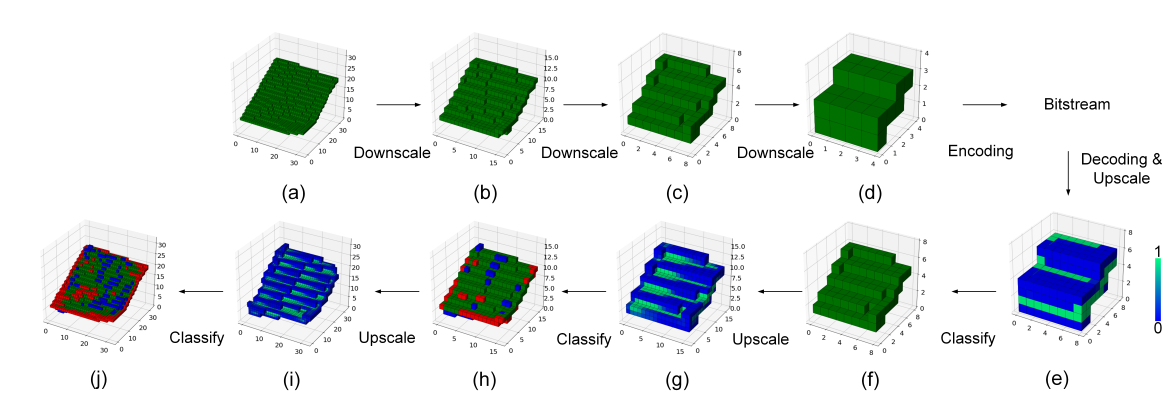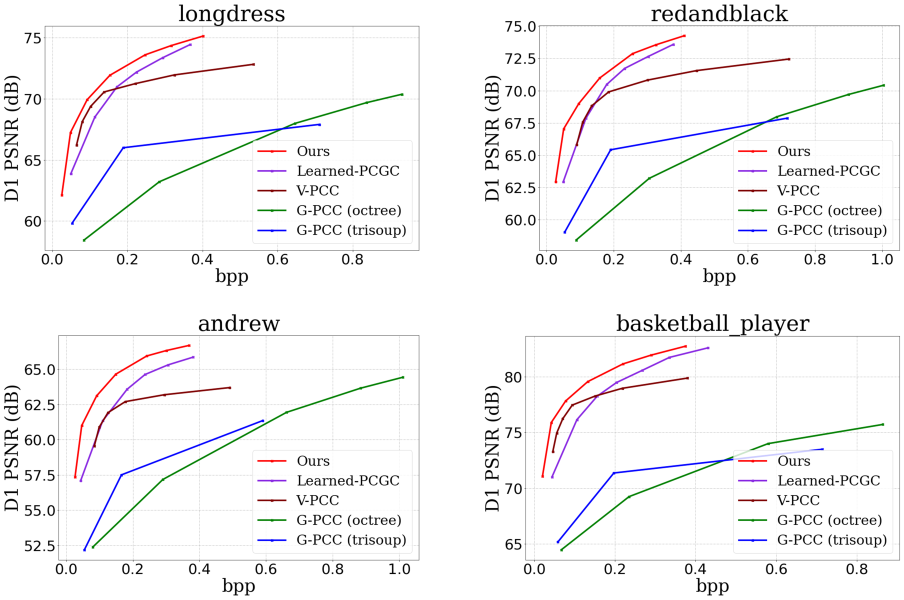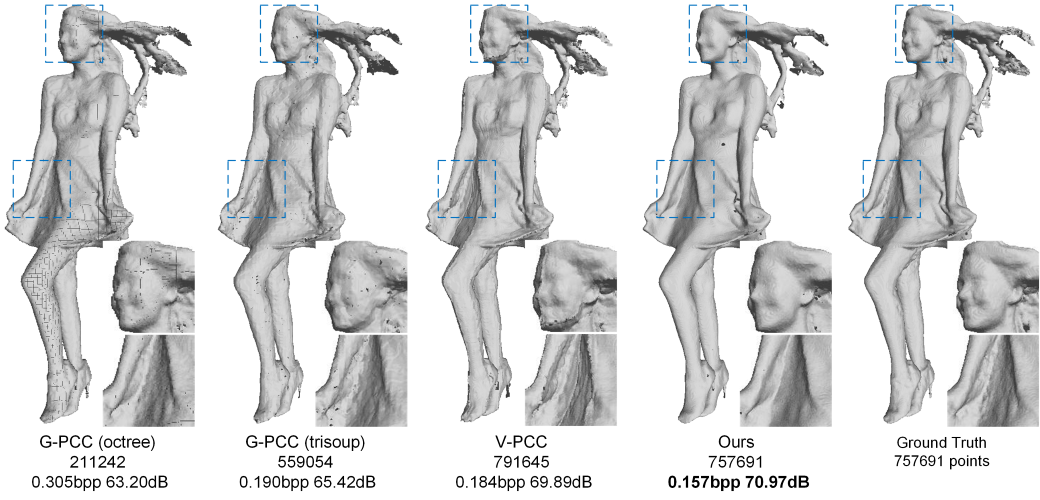We apply an end-to-end learning framework to compress the 3D point cloud geometry (PCG) efficiently. Leveraging the sparsity nature of point cloud, we introduce the multiscale structure to represent native PCG compactly, offering the hierarchical reconstruction capability via progressive learnt re-sampling. Under this framework, we devise the sparse convolution-based autoencoder for feature analysis and aggregation. At the bottleneck layer, geometric occupancy information is losslessly encoded with a very small percentage of bits consumption, and corresponding feature attributes are lossy compressed.
- 2021.1.1 Our paper has been accepted by DCC2021! [paper] [presentation]
- 2021.2.25 We have updated MinkowskiEngine to v0.5. The bug on GPU is fixed. And the encoding and decoding runtime is reduced.
Multiscale PCG Compression: (a) "Conv c*n^3" denotes the sparse convolution with 'c' output channels and n^3 kernel size, "Q" stands for Quantization, "AE" and "AD" are Arithmetic Encoder and Decoder respectively. "IRN" is Inception-Residual Network used for efficient feature aggregation. (a) network structure of IRN unit, (c) adaptive contexts conditioned on autoregressive priors.

Binary classification based hierarchical reconstruction: The top part shows the encoding process: (a), (b), (c), (d) are exemplified from a size of 32^3 to 4^3, by halving each geometric dimension scale step-by-step; The bottom part illustrates corresponding hierarchical reconstructions, geometric models are upscaled and classified gradually from the rightmost to the leftmost position: (e), (g), (i) are convolutionally upscaled from lower scales with size of 8^3, 16^3 and 32^3. Different colors are used to differentiate the probabilities of voxel-being-occupied (i.e., the greener, the closer to 1, and the bluer, the closer to 0); and (f), (h), (j) are the reconstructions after classification with green blocks for true classified voxels, blue for false positive, and red for false negative voxels.
-
python3.7
-
cuda10.2
-
pytorch1.7
-
MinkowskiEngine 0.5
We recommend you to follow the MinkowskiEngine installation instruction to setup the environment for the sparse convolution.
-
tensorflow1.13 (for Arithmetic Encoder)
-
Pretrained Models: https://box.nju.edu.cn/f/46d9206c6565471fb256/
-
Training Dataset: http://yun.nju.edu.cn/f/7c81b0e501/
python train.py --dataset='training_dataset/' --dataset_8i = 'testdata/8iVFB/'sudo chmod 777 utils/tmc3
python eval.py --filedir='testdata/8iVFB/redandblack_vox10_1550.ply' --ckptdir='ckpts/c8_a2_32000.pth'or test all data
python eval.py --test_alldemo.ipynb
See results.ipynb
- 2020.06 paper submission.
- 2020.10.29 open source code.
- 2021.02.25 bug fixed.
These files are provided by Nanjing University Vision Lab. And thanks for the help from Prof. Dandan Ding from Hangzhou Normal University and Prof. Zhu Li from University of Missouri at Kansas. Please contact us ([email protected] and [email protected]) if you have any questions.


